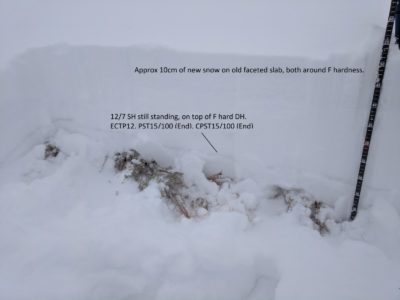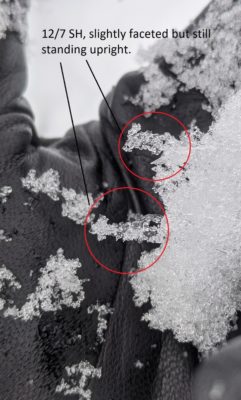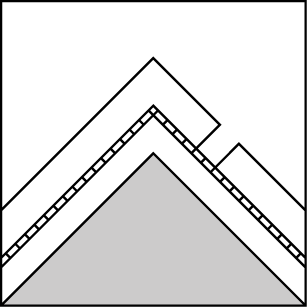Basic Information
Observation Details
Observation Date:
December 24, 2019Submitted:
December 24, 2019Observer:
SAC - Martin Stefan (off duty)Zone or Region:
Soldier and Wood River Valley MtnsLocation:
Triple PeakSigns of Unstable Snow
Recent Avalanches?
None ObservedCracking?
WidespreadCollapsing?
WidespreadSnow Stability
Stability Rating:
FairConfidence in Rating:
HighStability Trend:
WorseningBottom Line
Our thin and weak snowpack is groaning under the additional load, even if it is just around 4-5 inches of dense new snow. More snow and wind is going to make the slab heavier, increasing the strain further. Wind and mild temperatures conspire to make the slab stiffer, and thus increase the risk for a skier to remote trigger a slope above or to his or her sides. This is a Christmas present that is best unwrapped slowly and carefully.
Advanced Information
Weather Summary
Cloud Cover:
ObscuredTemperature:
30s at highway, mid 20s est at elevationWind:
Moderate , SA fair bit of wind drift on ridgelines on mid to high elevations. Light snowfall, around 10-12cm of new snow.
Avalanche Observations
Visibility abysmal, no chance to see any slides if they did not hit me in the face.
Snowpack Observations
At low elevation and S to E slopes there is still plenty of sagebrush poking through and breaking up any weak layers. On N through W aspects at mid to high elevations the snowpack is more consistent, and 12/7 is present and showing plenty of signs of activity. Lots of small collapses, and cracks shooting 10-20m on this layer.
On these slopes HS is around 55cm if sheltered from significant wind loading. 12/7 is around 35cm down and was clearly still standing SH where I looked. There was no MFcr under 12/7 along my route, just F hard DH.
A pit at 7600ft NW slope just enough below ridgeline to not be wind affected gave ECTP12, PST 15/100(End) and CPST 15/100 (End) on 12/7. The overlaying slab was F hard and actually fractured at the same time as the weak layer propagated full length.


Avalanche Problems
| Problem | Location | Distribution | Sensitivity | Size | Comments |
|---|---|---|---|---|---|
 Persistent Slab
Persistent Slab
|
|
Layer Depth/Date: 35-50cm, 12/7 Surface Hoar Comments: Right now the overlying slab is still very soft so avalanches will be small, but wind and time will give potential for bigger avalanches |
Terrain Use
I avoided avalanche terrain.
